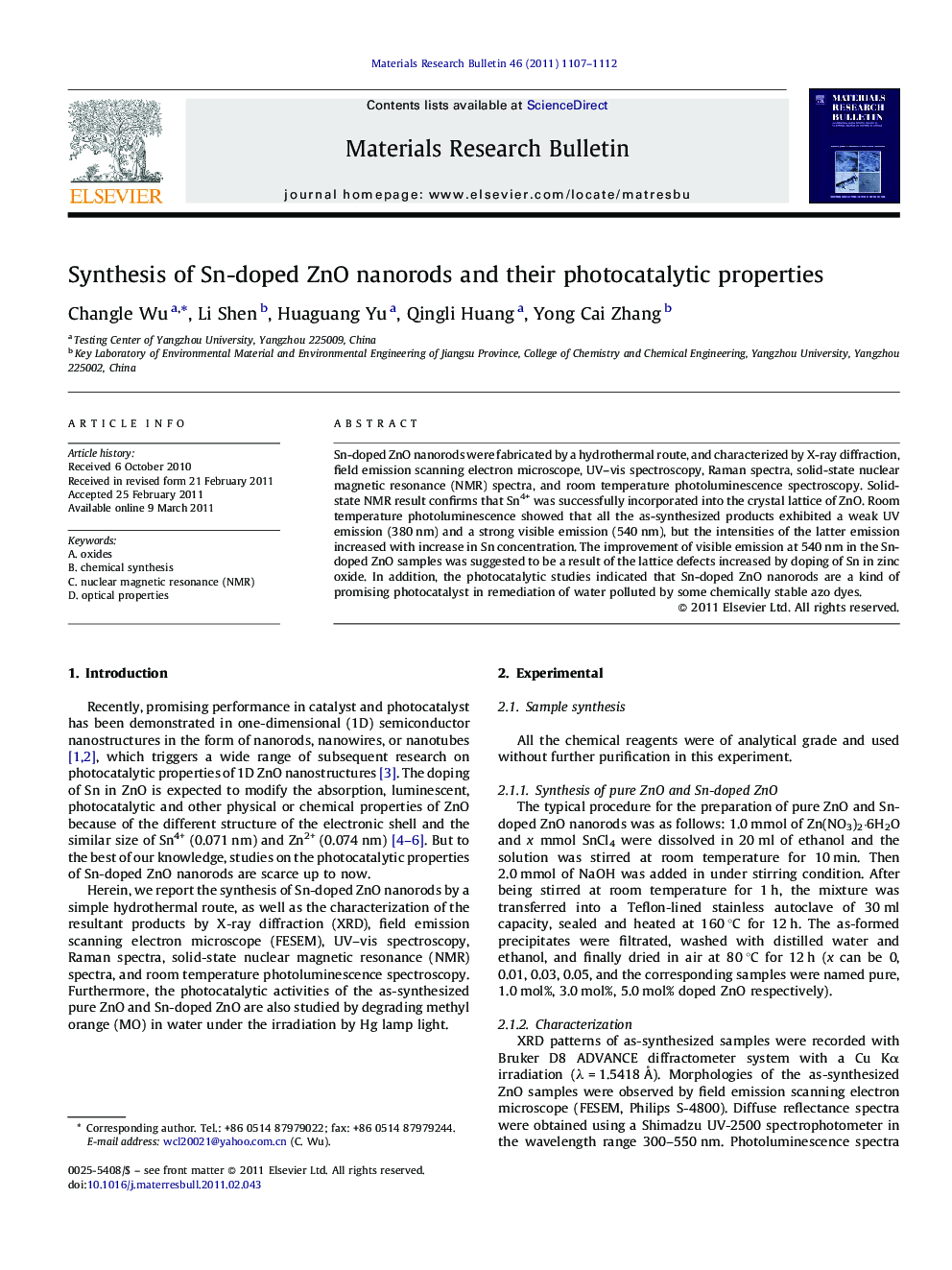| Article ID | Journal | Published Year | Pages | File Type |
|---|---|---|---|---|
| 1490496 | Materials Research Bulletin | 2011 | 6 Pages |
Sn-doped ZnO nanorods were fabricated by a hydrothermal route, and characterized by X-ray diffraction, field emission scanning electron microscope, UV–vis spectroscopy, Raman spectra, solid-state nuclear magnetic resonance (NMR) spectra, and room temperature photoluminescence spectroscopy. Solid-state NMR result confirms that Sn4+ was successfully incorporated into the crystal lattice of ZnO. Room temperature photoluminescence showed that all the as-synthesized products exhibited a weak UV emission (380 nm) and a strong visible emission (540 nm), but the intensities of the latter emission increased with increase in Sn concentration. The improvement of visible emission at 540 nm in the Sn-doped ZnO samples was suggested to be a result of the lattice defects increased by doping of Sn in zinc oxide. In addition, the photocatalytic studies indicated that Sn-doped ZnO nanorods are a kind of promising photocatalyst in remediation of water polluted by some chemically stable azo dyes.
Graphical abstractSn-doped ZnO nanorods have been fabricated by a hydrothermal route. Photocatalytic activity of the Sn-doped ZnO samples increases gradually with an increase of the Sn content.Figure optionsDownload full-size imageDownload as PowerPoint slideHighlights► Sn-doped ZnO nanorods were fabricated by a hydrothermal route. ► Solid-state NMR result confirms Sn4+ was incorporated into the lattice of ZnO. ► The visible luminescence intensity increased with increase in Sn concentration. ► Photocatalytic activity of Sn-doped ZnO increases with increasing Sn content.
